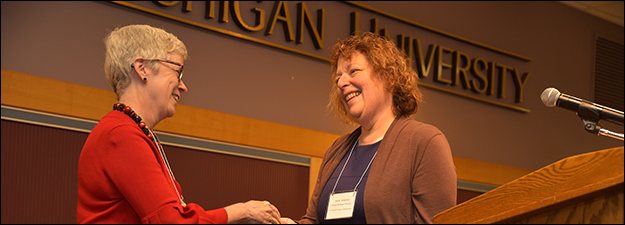New Research in Parish Church Art and Architecture in England and on the Continent, 1100-1600 II
Sponsoring Organization(s)
Special Session
Organizer Name
Sarah Blick
Organizer Affiliation
Kenyon College
Presider Name
Louise Hampson
Presider Affiliation
Centre for the Study of Christianity and Culture, Univ. of York
Paper Title 1
Much More Than the Storage Room of a Church: The Function, Symbolism, and Prestige of the Treasury Room in the Late Middle Ages
Presenter 1 Name
Claire LaBrecque
Presenter 1 Affiliation
Univ. of Winnipeg
Paper Title 2
License and Conformity in the Parish Churches of the Parisian Cathedral Chapter
Presenter 2 Name
Lindsay S. Cook
Presenter 2 Affiliation
Columbia Univ.
Paper Title 3
Totternhoe Clunch, Greensand, Oolitic Limestone: Using Local Materials in the Medieval Churches of Bedfordshire
Presenter 3 Name
David H. Kennett
Presenter 3 Affiliation
Independent Scholar
Paper Title 4
Thomas Loveday and Thomas Gooch: Two Suffolk Late Medieval Carpenters and Their Surviving Works
Presenter 4 Name
Lucy Wrapson
Presenter 4 Affiliation
Hamilton Kerr Institute, Univ. of Cambridge
Start Date
12-5-2017 3:30 PM
Session Location
Fetzer 2020
Description
Medieval parish churches though created as placed to celebrate the liturgy, became true community centers. Parishioners would agree on business deals at the church door, hold village celebrations in the churchyard, and paid taxes, organized poor relief, lent out plows, placed fire-fighting equipment and agreed-upon weights and measures, and stored important documents in the nave and tower. Because villagers had reasons to enter the church almost every day, artist and patrons sought to create compelling visual images that would continue to engage the parishioners over many years.
These sessions seek papers that explore new approaches to some very old architecture, sculpture, painting, and other church furnishings. Why were certain plans acceptable and others ignored? What determined the placement of windows, doors, ceiling openings, and trapdoors and how did that change throughout the centuries? How did artists respond to increased demand from pious laypeople for intense, emotional devotion, but in a public space through ever-changing decorative programs?
Sarah Blick
New Research in Parish Church Art and Architecture in England and on the Continent, 1100-1600 II
Fetzer 2020
Medieval parish churches though created as placed to celebrate the liturgy, became true community centers. Parishioners would agree on business deals at the church door, hold village celebrations in the churchyard, and paid taxes, organized poor relief, lent out plows, placed fire-fighting equipment and agreed-upon weights and measures, and stored important documents in the nave and tower. Because villagers had reasons to enter the church almost every day, artist and patrons sought to create compelling visual images that would continue to engage the parishioners over many years.
These sessions seek papers that explore new approaches to some very old architecture, sculpture, painting, and other church furnishings. Why were certain plans acceptable and others ignored? What determined the placement of windows, doors, ceiling openings, and trapdoors and how did that change throughout the centuries? How did artists respond to increased demand from pious laypeople for intense, emotional devotion, but in a public space through ever-changing decorative programs?
Sarah Blick

